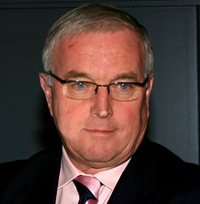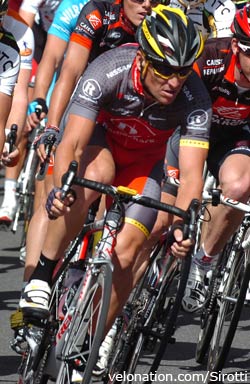Armstrong was not being investigated for doping at the time
 International Cycling Union president Pat McQuaid has confirmed a $100,000 donation from seven-time Tour de France champion Lance Armstrong, and insists there was no conflict of interest as a result of the transaction. His response comes following claims by American Floyd Landis that Armstrong paid off the sport’s governing body to cover up a positive doping result.
International Cycling Union president Pat McQuaid has confirmed a $100,000 donation from seven-time Tour de France champion Lance Armstrong, and insists there was no conflict of interest as a result of the transaction. His response comes following claims by American Floyd Landis that Armstrong paid off the sport’s governing body to cover up a positive doping result.
Landis also accused Armstrong and his long-time manager Johan Bruyneel of systematic doping practices when he rode for their the United States Postal Service cycling team. Landis also accused several other cyclists and prominent figures in the sport of being involved with or having knowledge of doping.
McQuaid met with the press at today’s stage of the Giro d’Italia and discussed the situation. “In 2002 just after the inauguration of the world cycling centre [located in Aigle, Switzerland] Lance Armstrong and Johan Bruyneel visited the facilities,” he said.
“Armstrong was very impressed and offered a $100,000 dollar donation to help in the development of cycling.”
The UCI president then said the money Armstrong donated was used to buy a machine used to analyse blood samples. The Irishman also detailed the circumstances surrounding the collection of the donation.
 “The UCI decided to use this money to buy a machine [for blood sample analysis]. Three years later we realised that the money still hadn’t been deposited,” McQuaid explained.
“The UCI decided to use this money to buy a machine [for blood sample analysis]. Three years later we realised that the money still hadn’t been deposited,” McQuaid explained.
“We informed the company which manages Armstrong’s finances and the money was soon paid.”
McQuaid said that Armstrong wasn’t under any sort of anti-doping investigation at the time, so there was no need to question his offer of support. He also said that he would approach a similar situation differently in the future.
“You have to look at the context of that period. In 2002 Armstrong was facing no doping allegations,” said the UCI president.
He also categorically denied Landis’ claims that his predecessor, Hein Verbruggen, helped Armstrong cover up a positive test for the banned blood booster EPO. He added that the controls in place make it impossible.
“All the information we’ve had shows in a clear and definitive manner that it was impossible for my predecessor to conceal a positive doping test. “It is just not possible.” added McQuaid.